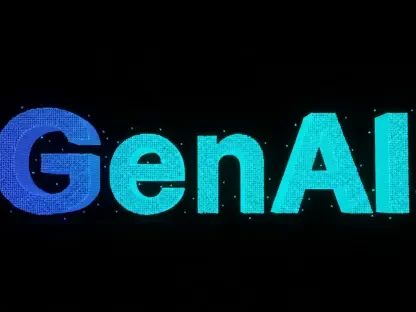In an era where cloud computing dominates the tech landscape, a surprising contender has emerged as a powerful ally for developers: Chrome OS. Originally perceived as a lightweight, browser-centric system for basic tasks, this operating system has transformed into a robust platform for cloud development, challenging traditional setups. With the global cloud computing market projected to grow exponentially in the coming years, the ability to leverage affordable and scalable tools is more critical than ever. This review dives deep into how Chrome OS, running on Chromebooks, has evolved to meet the demands of modern developers, exploring its standout features, real-world performance, and potential to reshape cloud-based workflows.
Evolution of Chrome OS as a Development Tool
Chrome OS, initially launched as a minimalist operating system focused on web browsing, has undergone a remarkable shift to cater to the needs of software developers. Its core design revolves around a lightweight framework that prioritizes cloud resources over local hardware, making it an ideal candidate for cloud-centric projects. This approach reduces the burden on physical devices, allowing even modestly equipped Chromebooks to handle complex development tasks through remote computing power.
The growing relevance of Chrome OS in the development sphere cannot be overstated. As more organizations and individual developers pivot toward cloud-based solutions, the platform’s ability to integrate seamlessly with major cloud ecosystems has positioned it as a viable alternative to traditional operating systems. This transformation reflects a broader trend in the industry, where efficiency and accessibility are becoming paramount for coding and deployment workflows.
Core Features Powering Cloud Development
Seamless Integration with Cloud Ecosystems
One of the defining strengths of Chrome OS lies in its deep integration with cloud platforms, most notably Google Cloud Platform (GCP). This connection enables developers to build, test, and deploy scalable applications without requiring high-end local hardware, as most of the heavy lifting is offloaded to the cloud. Such a setup is particularly beneficial for projects that demand dynamic resource allocation, ensuring flexibility in managing workloads.
This integration also fosters hybrid workflows, striking a balance between local efficiency and cloud utilization. Developers can access virtual machines, storage solutions, and collaborative tools directly from their Chromebooks, streamlining processes that would otherwise require multiple systems. The result is a cohesive environment that minimizes setup time and maximizes productivity for cloud-focused projects.
Linux Support through Crostini
A pivotal advancement for Chrome OS is the introduction of Linux support via Crostini, a feature that unlocks access to a wide array of development tools. With Crostini, developers can run essential software like Git for version control, Node.js for web applications, Python for scripting, and Docker for containerization, all within a secure Linux environment on their device. This capability has effectively bridged the gap between Chrome OS and more traditional development platforms.
The flexibility offered by Crostini eliminates many compatibility issues that once hindered complex project development on Chromebooks. It allows for the creation of isolated environments, ensuring consistent performance across different cloud platforms. For developers accustomed to Linux-based workflows, this feature transforms Chrome OS into a familiar and powerful toolset, broadening its appeal significantly.
Latest Trends and Innovations
Recent advancements in Chrome OS have further solidified its standing in the development community, with hardware upgrades playing a crucial role. Modern Chromebooks now boast enhanced processors, increased RAM, and larger SSD storage, enabling them to tackle more demanding tasks locally when needed. These improvements address earlier criticisms of limited hardware capabilities, making the devices more versatile for coding and testing.
Emerging trends in software development, such as the shift toward cloud-based workflows, align perfectly with the strengths of Chrome OS. Its lightweight design and reliance on remote resources cater to the growing demand for scalable, on-demand computing power. Additionally, innovations like potential AI-assisted development tools hint at future productivity boosts, promising to automate repetitive tasks and enhance code quality.
A forward-looking aspect of Chrome OS development includes the exploration of tighter integration with cutting-edge technologies. As AI and machine learning tools become more prevalent, the platform’s ability to incorporate such features could redefine how developers approach problem-solving. This trajectory suggests that Chrome OS will continue to adapt to the evolving needs of the tech industry over the next few years.
Real-World Performance in Cloud Projects
Across various sectors, Chrome OS has proven its worth as a reliable platform for cloud development, catering to startups, freelancers, and even enterprises. Its affordability and scalability make it particularly attractive for small teams building web applications, where budget constraints often limit hardware investments. By leveraging cloud resources, these teams can achieve high performance without compromising on quality.
Unique use cases, such as managing containerized environments with tools like Docker and Kubernetes, highlight the platform’s versatility. Developers can orchestrate complex deployments directly from Chromebooks, ensuring seamless integration with cloud infrastructure. Such implementations demonstrate how Chrome OS supports intricate workflows that were once thought to be beyond its scope.
Notable success stories further illustrate the platform’s impact on development processes. Many organizations have adopted Chrome OS to streamline collaborative projects, utilizing cloud-based tools for real-time coding and debugging. This has resulted in faster turnaround times and reduced overhead costs, showcasing the practical benefits of adopting this system for scalable software solutions.
Challenges Facing Chrome OS in Development
Despite its strengths, Chrome OS faces certain technical challenges that can impact its adoption for cloud development. A primary concern is the dependency on stable internet connectivity, as the platform’s reliance on cloud resources can hinder productivity in offline scenarios. While some offline capabilities exist, they remain limited for intensive tasks, posing a barrier in remote or unstable network environments.
Another hurdle is the learning curve associated with transitioning to Chrome OS, especially for developers unfamiliar with its interface or the Linux environment provided by Crostini. Adapting to a new workflow may require additional training or time investment, potentially slowing down initial project timelines. This aspect can be particularly daunting for teams accustomed to more conventional systems.
Efforts to address these limitations are ongoing, with hardware advancements and expanded offline functionalities showing promise. Manufacturers are continuously improving Chromebook specifications to support more local processing power, while software updates aim to enhance offline toolsets. These developments suggest a commitment to overcoming current constraints and broadening the platform’s applicability.
Future Prospects for Chrome OS
Looking ahead, Chrome OS holds significant potential to further establish itself as a leading platform for cloud development. Deeper integration with emerging technologies, such as AI and machine learning frameworks, could enable developers to leverage automated coding assistance and predictive analytics directly from their devices. Such advancements would likely accelerate development cycles and improve output quality.
Anticipated breakthroughs, including enhanced offline functionality and broader software compatibility, are expected to address existing pain points. If successful, these improvements could make Chrome OS a more self-sufficient platform, reducing its reliance on constant cloud connectivity. This would expand its usability across diverse working conditions and geographic regions.
The long-term impact of Chrome OS on the development industry could be transformative, especially for cost-conscious solutions. As more developers and organizations recognize the benefits of combining affordability with scalability, the platform may redefine standard practices in cloud-based software creation. Its influence is poised to grow, shaping how future projects are conceptualized and executed.
Final Thoughts on Chrome OS
Reflecting on this evaluation, Chrome OS has carved out a notable niche in the cloud development arena with its innovative features and adaptability. Its seamless integration with cloud ecosystems, robust Linux support through Crostini, and improved hardware capabilities demonstrate a clear departure from earlier limitations. Real-world applications across various sectors underscore its effectiveness in delivering scalable and efficient solutions.
For those considering Chrome OS as a development platform, the next step involves assessing specific project needs against its strengths in security and cost-effectiveness. Exploring hybrid setups that combine local and cloud resources offers a practical way to maximize its potential. Additionally, staying updated on forthcoming enhancements, particularly in offline functionality, ensures readiness for broader adoption.
As the technology landscape continues to evolve, investing in training for teams unfamiliar with Chrome OS proves beneficial in overcoming initial learning barriers. Collaborating with cloud service providers to customize workflows further enhances its utility. Ultimately, Chrome OS stands as a compelling choice for developers seeking an economical yet powerful tool, paving the way for innovative approaches in cloud development.









